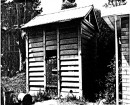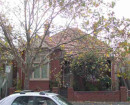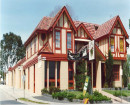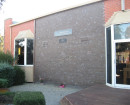NEWMARKET RAILWAY STATION COMPLEX
340 RACECOURSE ROAD, and PIN OAK CRESCENT, FLEMINGTON, MOONEE VALLEY CITY
Racecourse Road
-
Add to tour
You must log in to do that.
-
Share
-
Shortlist place
You must log in to do that.
- Download report
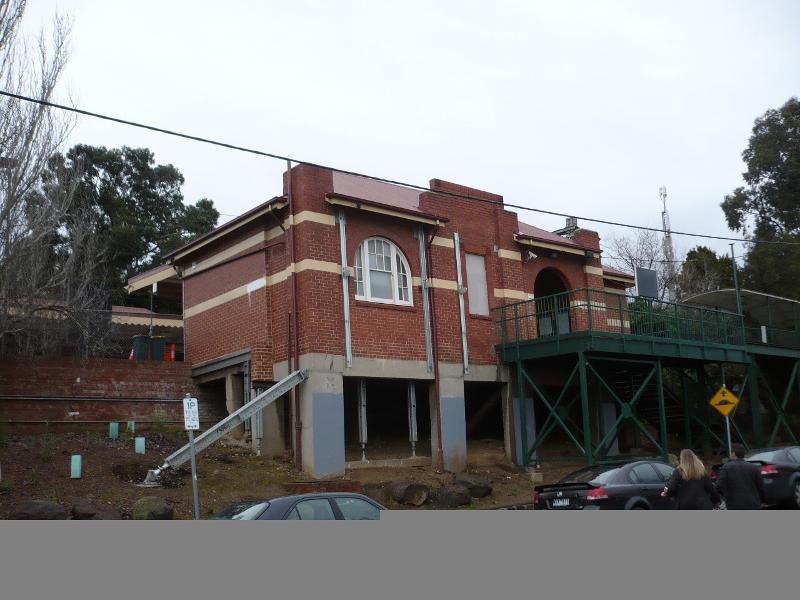

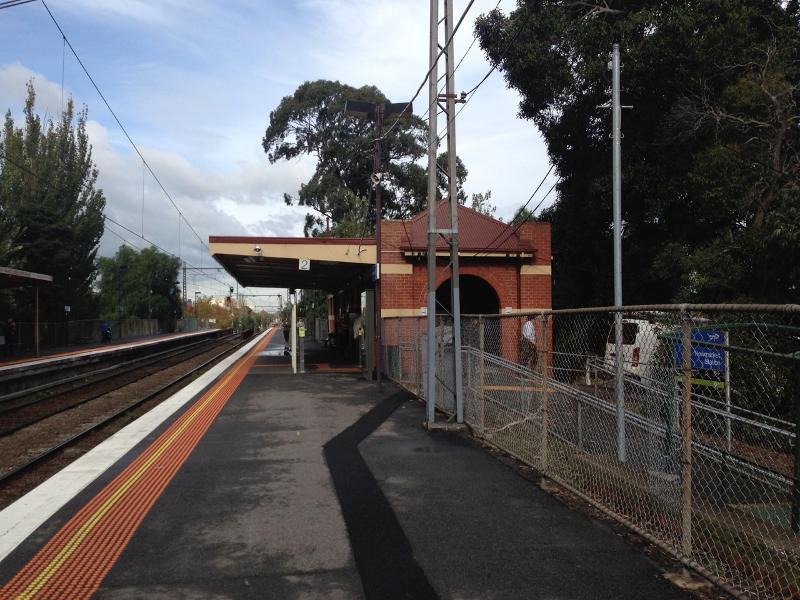
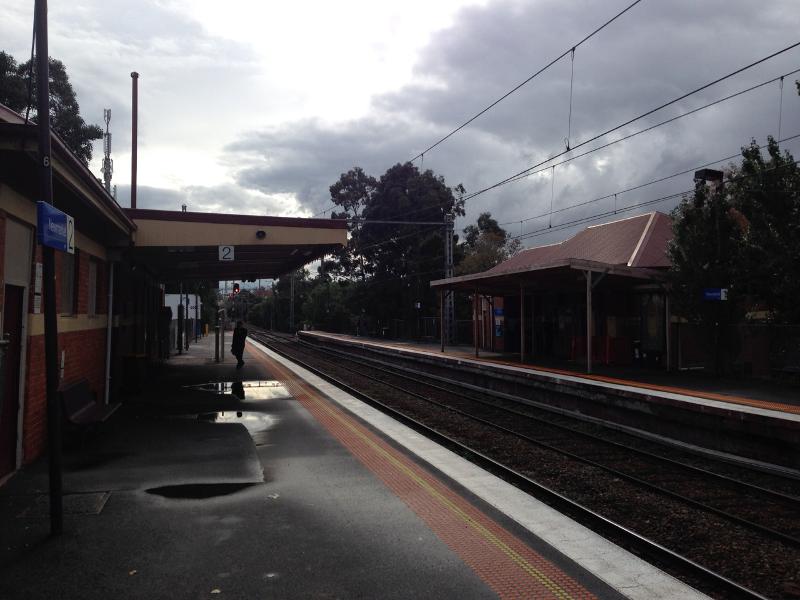
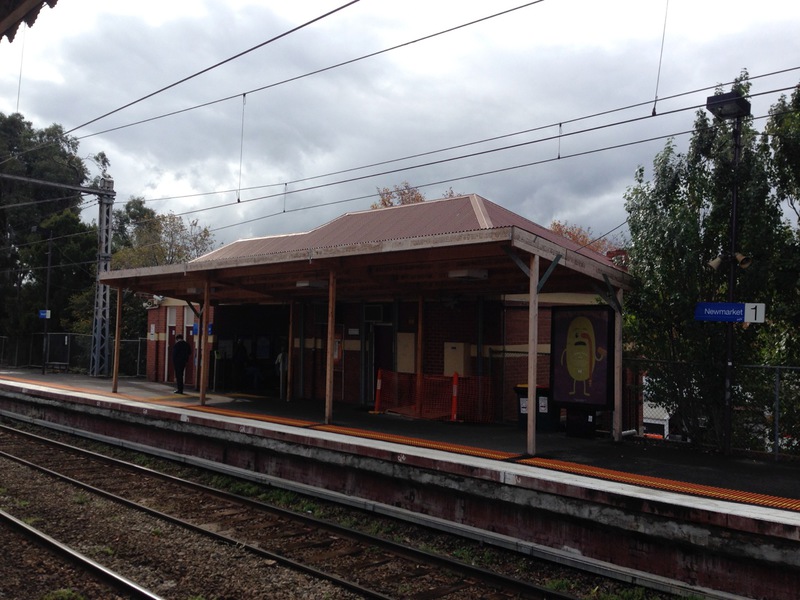
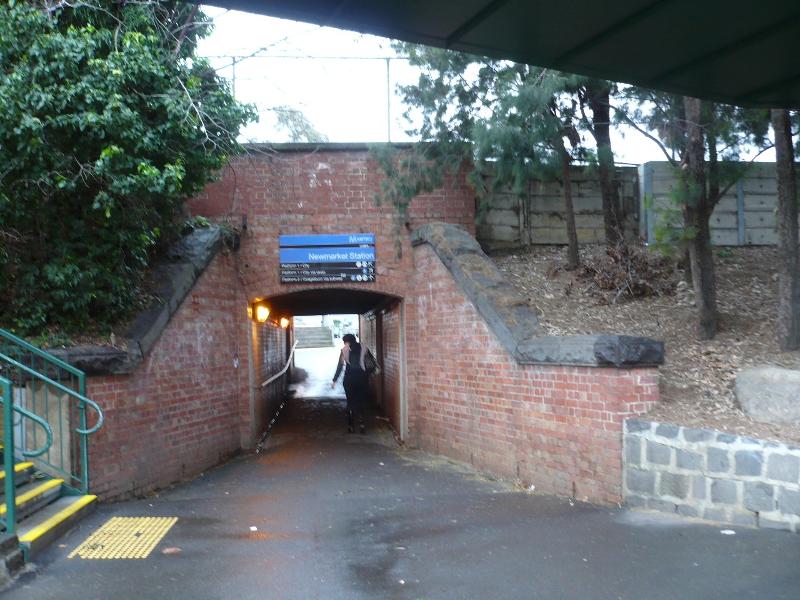
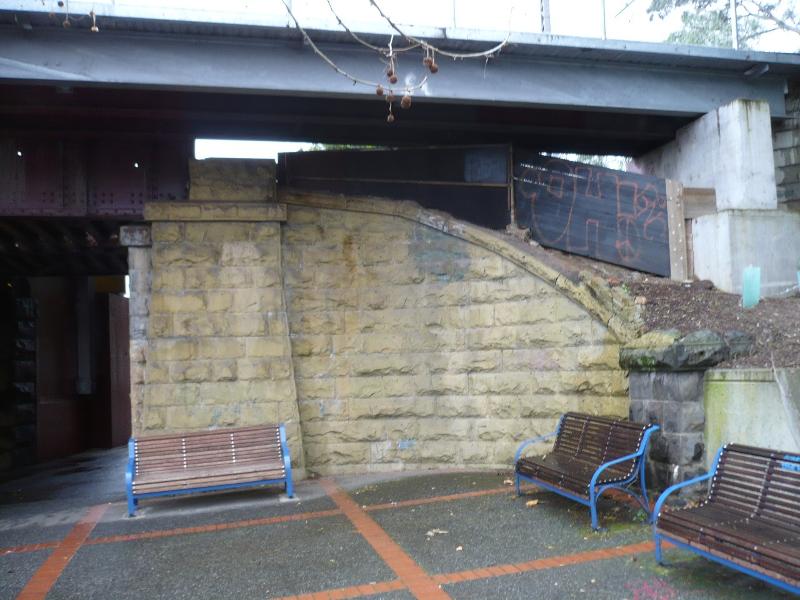
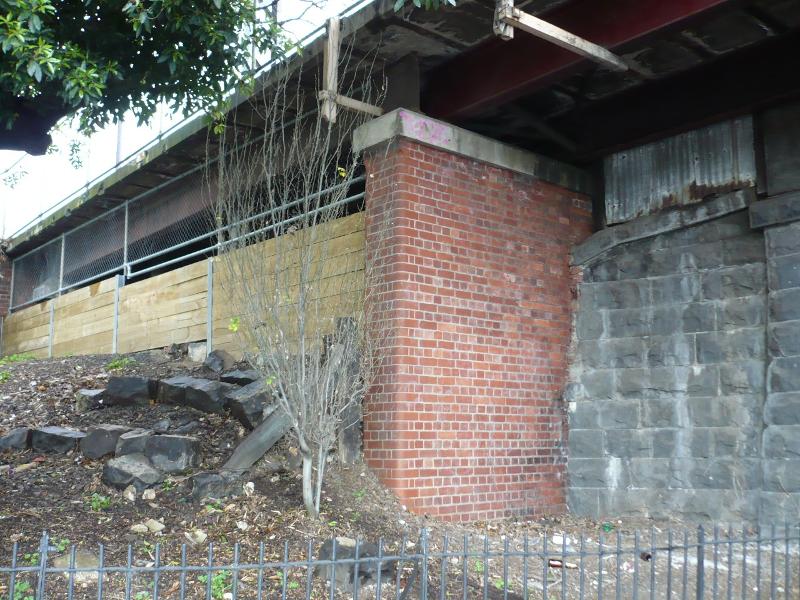
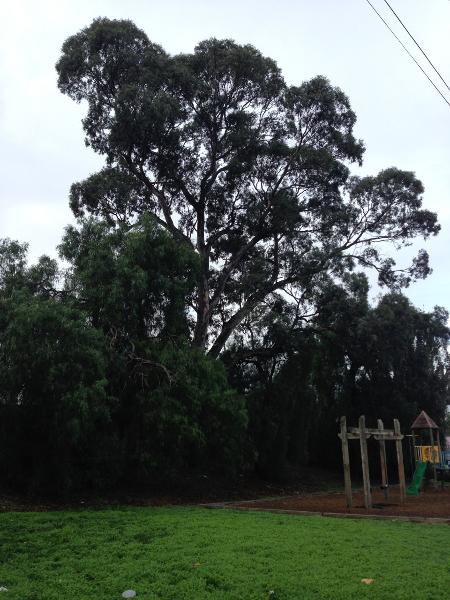


Statement of Significance
The Newmarket Railway Station complex, which comprises the Up and Down station buildings and platforms as constructed in 1925, the steel lattice stanchions supporting the overhead wiring dating from c.1919, the pedestrian subway with brick walls and bluestone coping and the bluestone bridge abutments and piers to Racecourse Road to the extent of the nineteenth century fabric, and the mature trees in the adjoining reserves dating from c.1920s, is significant.
The station buildings are constructed of brick with hipped roofs, originally tiled but now clad in red colourbond. The buildings have detailing typical of Edwardian era stations such as the rendered bands at mid-wall level and eaves height, the arched windows and entries, and the surviving cantilevered steel awning to the Down side building, with ripple-iron valance, scalloped along the front. Each building has a central section with a similar, symmetrical outward-facing elevation divided into three bays by pilasters that rise above eaves height to become pylons at the corners and to frame a stepped parapet at the centre, punctuated by the roof. The outer bays contain arched openings (on the Up side, both are windows, and on the Down, one is the lobby entrance) on either side of a tall rectangular window. Decorative terracotta tiles with floral motifs are placed at the top corners of the central window and the top corners of the central parapet. With the exception of one window on the Up side building, all of the windows have been removed or covered over. On the Down side building the central section is flanked on the north side by the arched entrance to the lobby, which is also framed by pylons on each corner, and by a hipped roof wing on the south side that originally contained waiting rooms and toilets. On the Up side building, there is a hipped roof section on the north side while the open lobby retains what appears to be an original timber bench seat along one wall. The platform retains the brick facing with concrete coping facing the railway, and precast reinforced concrete panels on the outer walls.
Mature trees surrounding the station include several Peppers (Schinus molle), Silver or White Poplars (Populus alba) and a River Red Gum (Eucalyptus camaldulensis), mostly to the south of the buildings with one Pepper at the north end of the Down side platform and a large Fig (Ficus sp.) adjacent to the ramp leading to the Down side building entrance.
Non-original alterations and additions to the complex are not significant.
How is it significant?
The Newmarket Railway Station complex is of local historic and aesthetic significance to the City of Moonee Valley.
Why is it significant?
It is historically significant for its associations with the establishment and development of the Essendon Railway, which was one of the first suburban railways in Melbourne. The re-opening of the railway and early improvements in the nineteenth century are demonstrated by the pedestrian subway and the bluestone and plate girder bridge, while the station buildings, lattice stanchions and platforms are associated with the improvements made by the Victorian Railways in the 1920s as a consequence of the scheme to electrify the whole of the suburban railway network. It is representative of the new stations that were built in response to the increased patronage that resulted from electrification, which is demonstrated by the facilities provided on both the Up and Down platforms. The associated mature landscaping provides evidence of the initiative of the Victorian Railways encourage the creation of gardens around stations in the early twentieth century. It is also associated with the development of the adjacent commercial precinct in Racecourse Road and Pin Oak Crescent and surrounding residential areas. The railway station encouraged the development of the surrounding areas in the late nineteenth and early twentieth centuries, which in turn led to the need for a new and larger station by the interwar period. (Criteria A & D)
It has aesthetic significance for the Edwardian style characteristics that are typical of station buildings in the early twentieth century such as the red brickwork with contrasting rendered bands and the arched windows and doorways. Of particular note is the symmetrical composition of the outward-facing facades of the central sections of both the Up and Down buildings with distinctive details such as the piers/pylons to the corner and stepped central parapet. The aesthetic qualities of the station complex are enhanced by its elevated siting and the mature trees, and the complex as a whole forms a landmark that contributes to the historic character of the historic commercial centre in Racecourse Road and Pin Oak Crescent of which it forms a part. (Criterion E)
-
-
NEWMARKET RAILWAY STATION COMPLEX - Physical Description 1
The Newmarket Railway Station is situated on a high embankment on the north side of Racecourse Road. The railway crosses Racecourse Road on a steel plate girder bridge with bluestone abutments and piers, of which the northern half is situated within the City of Moonee Valley (the southern half is within the City of Melbourne). Part of the abutment on the Down (west) side has been removed to accommodate the station platform, which was extended in 1925.
The station buildings are constructed of brick with hipped roofs, originally tiled but now clad in red colourbond. The style of the buildings show the transition from the Edwardian era stations constructed prior to World War I. This can be seen in details such as the rendered bands at mid-wall level and eaves height, the arched windows and entries, and the surviving cantilevered steel awning to the Down side building, with ripple-iron valance, scalloped along the front.
Each building has a central section containing the original booking & parcels office and lobby with flanking hipped roof wings. The central section of each building has a similar symmetrical outward facing elevation divided into three bays by pilasters that rise above eaves height to become pylons at the corners and frame a stepped parapet at the centre, and are punctuated by the roof. The outer bays contain arched openings (on the Down side, both are windows, and on the Up, one is the lobby entrance) on either side of a tall rectangular window. Decorative terracotta tiles with floral motifs are placed at the top corners of the central window and the top corners of the central parapet. With the exception of one window on the Up side building, all of the windows have been removed or covered over.
The central section of the slightly larger Down side building is flanked on the north side by the arched entrance to the lobby, which is also framed by pylons on each corner, and by a hipped roof wing on the south side that originally contained waiting rooms, toilets and the porter's room with high set windows positioned within the horizontal render banding.
On the Up side building, the hipped roof wing on the north side once contained the general or men's waiting room and now contains men's and women's toilets. It has high set windows positioned within the horizontal render banding. The open lobby within the central section retains what appears to be an original or early timber bench seat along one wall.
The most significant change to the station is the demolition of the wing on the south side of the Up side building that contained the Ladies waiting room and toilets for both sexes and the removal of the awning to that building. Other visible alterations include the replacement of the original roof tiles with colourbond, removal of chimneys, replacement or covering/bricking up of most windows (with the exception of the arched window in the Up side building as noted above) and some doorways, and the replacement of the original timber ramps and steps to the Up side building.
The platform retains the brick facing with concrete coping facing the railway, and precast reinforced concrete panels on the outer walls as constructed in 1925. Contained within the platforms are two sets of lattice stanchions that support the overhead wires, which appear to date from the interwar period and may be the original ones erected as part of the electrification scheme. The pedestrian subway, which appears to pre-date the station buildings, has red brick walls (now overpainted on the west side) with bluestone coping. Later (probably post-war) additions on the west side comprise concrete walls with bluestone blocks.
Mature trees surrounding the station that are probably associated with VR landscaping schemes include several Peppers (Schinus molle), Silver or White Poplars (Populus alba) and a River Red Gum (Eucalyptus camaldulensis), mostly to the south of the buildings with one Pepper at the north end of the Down side platform and a large Fig (Ficus sp.) adjacent to the ramp leading to the Down side building entrance.
The railway station complex forms part of the historic commercial centre in Racecourse Road and Pin Oak Crescent. The railway bridge is a landmark within the centre and defines the historic western boundary. The shops along Pin Oak Crescent, which date from the late Victorian to interwar periods provide a related setting for the station.
Heritage Study and Grading
Moonee Valley - City of Moonee Valley Stage 1 Heritage Gap Study
Author: Context PL
Year: 2013
Grading: Local
-
-
-
-
-
TERRACE
 Victorian Heritage Register H0077
Victorian Heritage Register H0077 -
TERRACE
 Victorian Heritage Register H0081
Victorian Heritage Register H0081 -
FORMER FLEMINGTON COURT HOUSE
 Victorian Heritage Register H1470
Victorian Heritage Register H1470
-
"1890"
 Yarra City
Yarra City -
"AMF Officers" Shed
 Moorabool Shire
Moorabool Shire -
"AQUA PROFONDA" SIGN, FITZROY POOL
 Victorian Heritage Register H1687
Victorian Heritage Register H1687
-
'Boonderoo', House and Outbuildings
 Greater Bendigo City
Greater Bendigo City -
'Riverslea' house
 Greater Bendigo City
Greater Bendigo City -
1 Adam Street
 Yarra City
Yarra City
-
-









